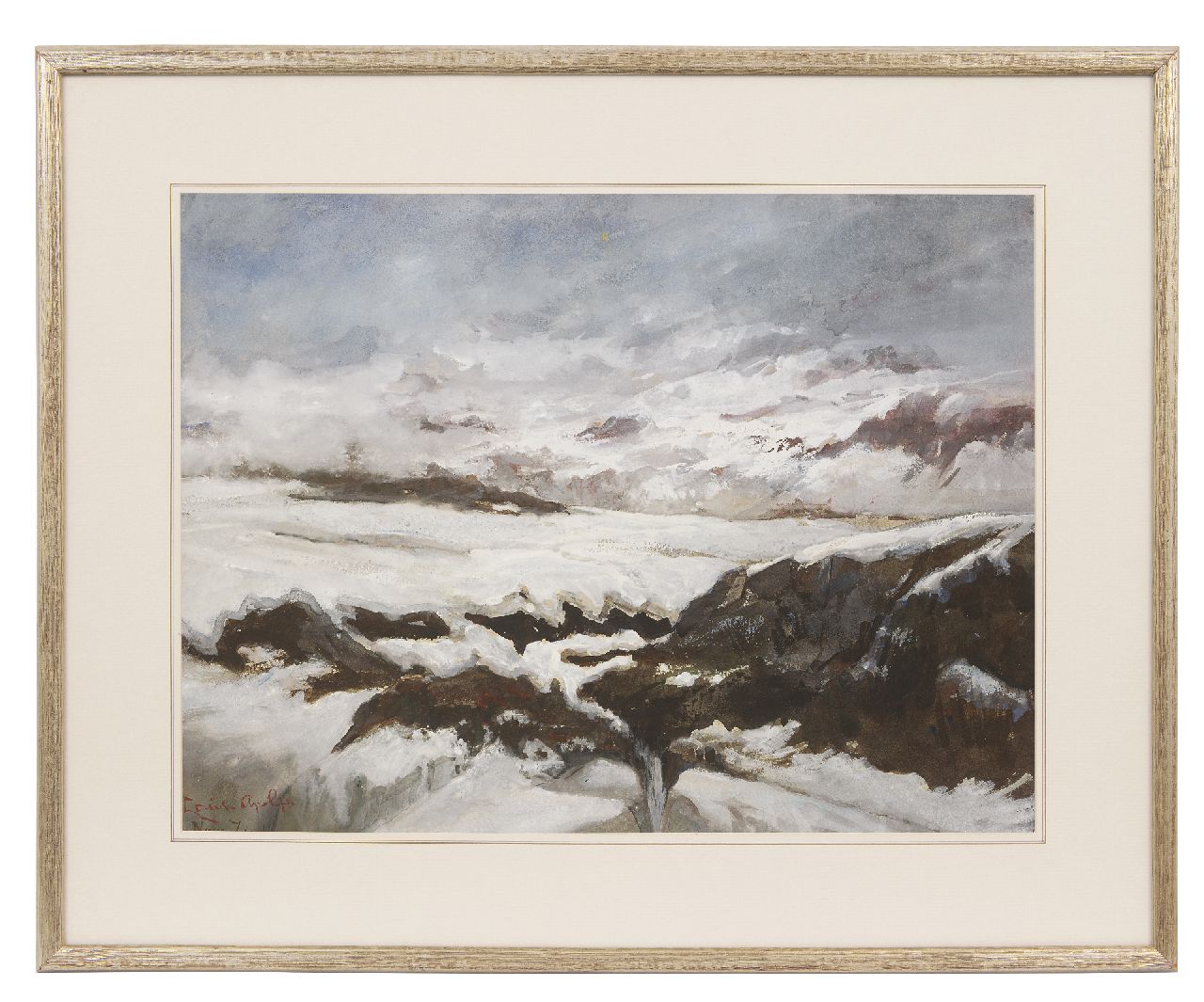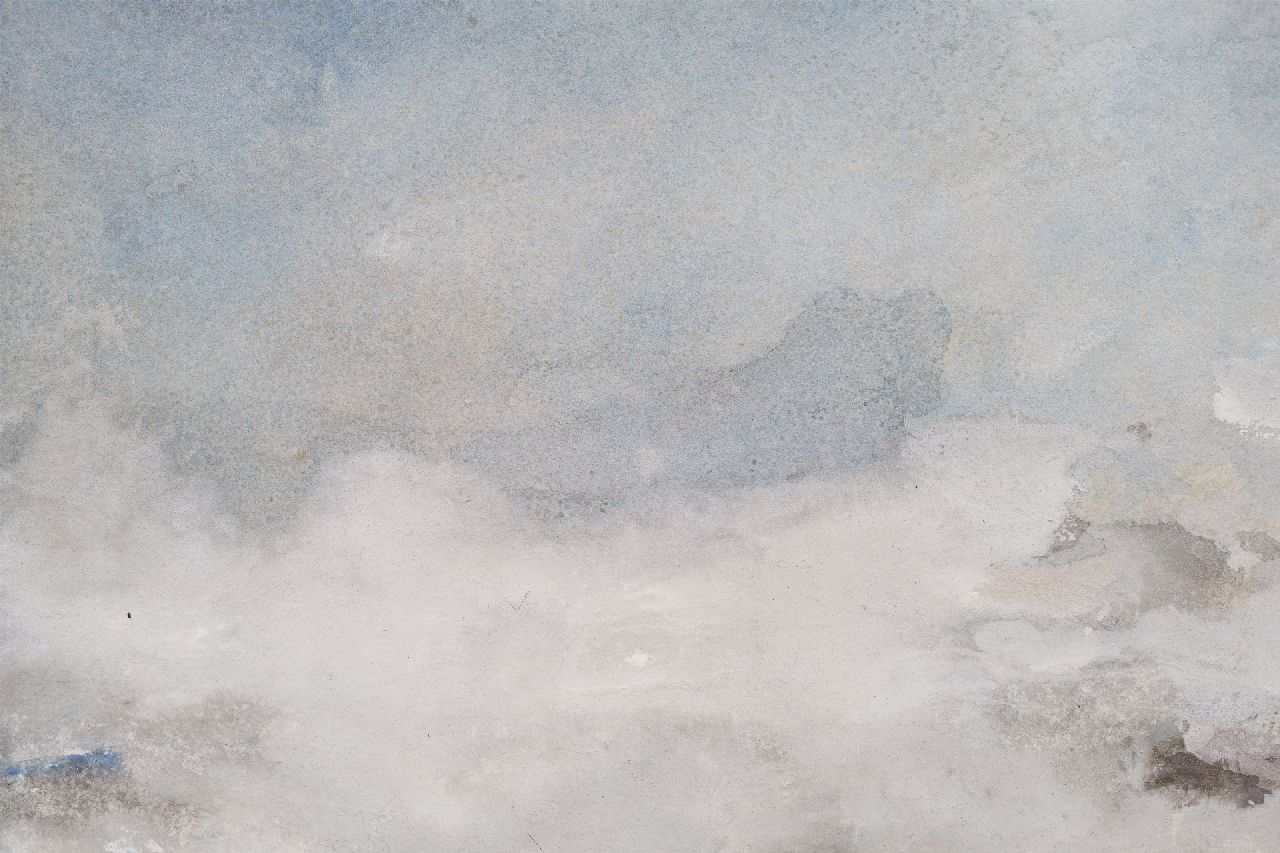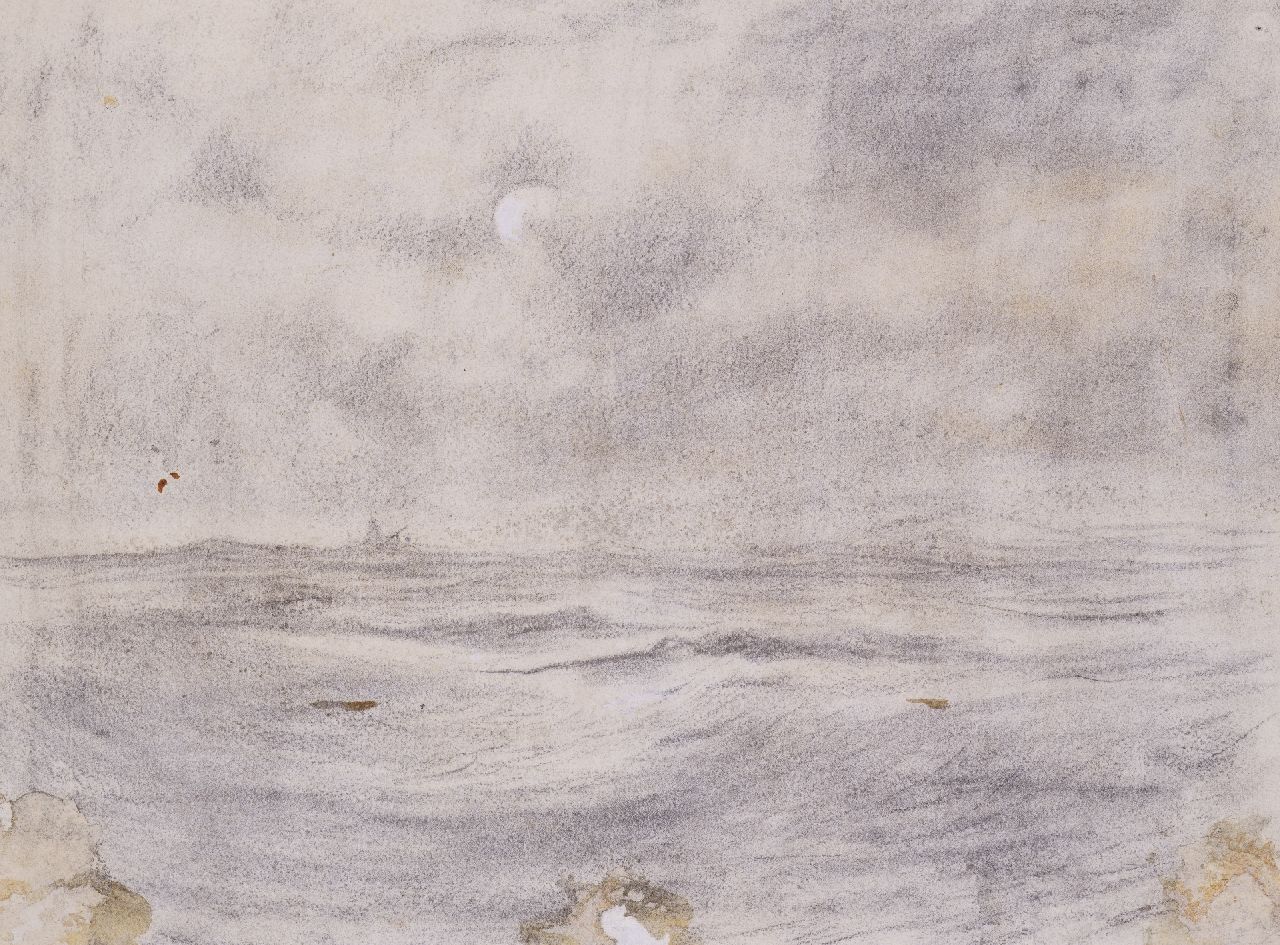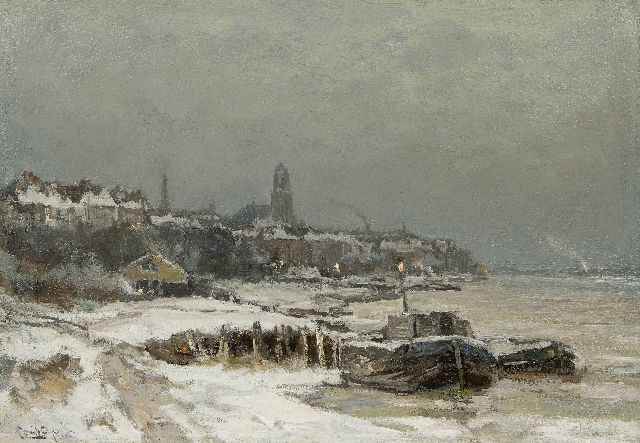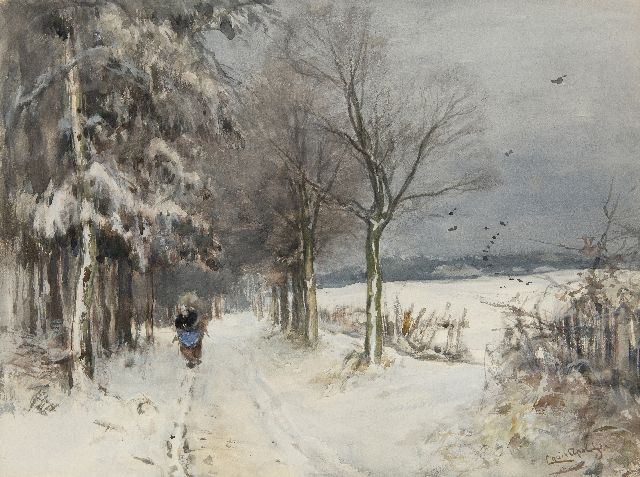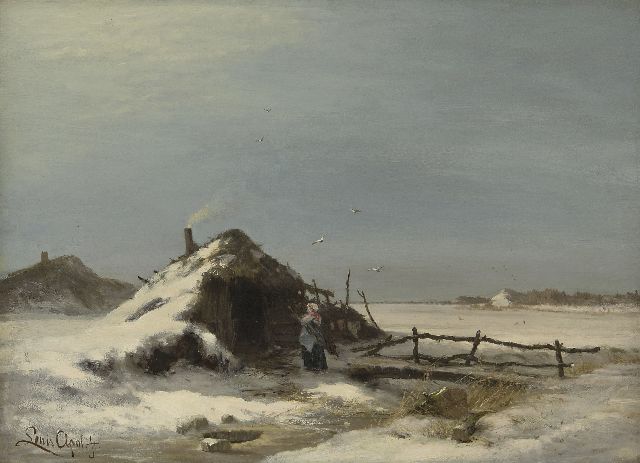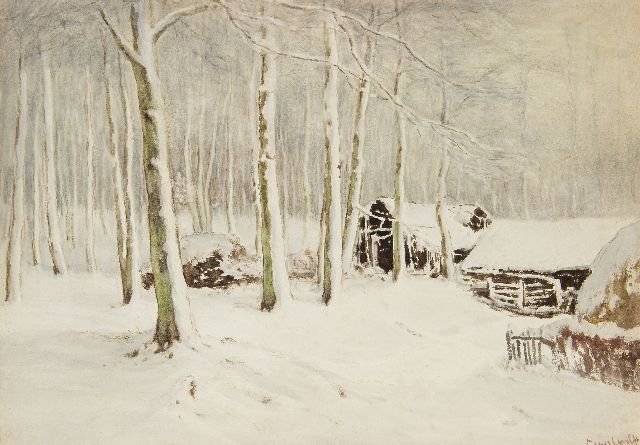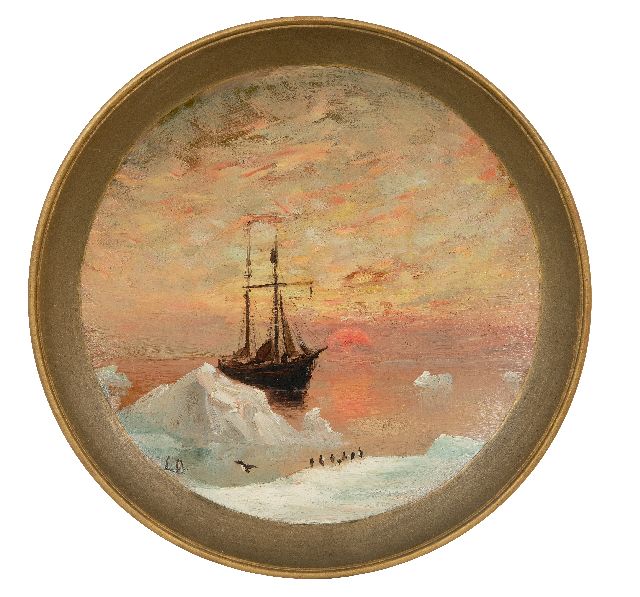Louis Apol artwork • watercolour • drawing • for sale At Nova Zembla
Louis Apol
Den Haag 1850-1936
1850-1936
At Nova Zembla
gouache on paper 47.5 x 63.0 cm, signed l.l. and to be dated 1880
This work on paper is for sale.
Price: € 10,000
Louis Apol (1850-1936) broke through on his 24th as a painter of winter landscapes at an exhibition of living masters in Amsterdam, where he has been exhibiting since he was 16th. His winter landscapes were so successful and so lifelike that in the summer of 1880 he was invited to sail as a painter on a scientific expedition from the polar schooner Willem Barentsz to Nova Zembla. He was 29 years old at the time and the most famous Dutch painter of winter landscapes. It was important for the Arctic Maritime Committee, which is part of the Royal Netherlands Geographical Society (KNAG), that the presence of a celebrity like Apol would receive a lot of positive attention. An exhibition of the work he would have painted on board the Willem Barentsz could afford a new polar voyage. The trip offered Apol the ultimate opportunity to study and visualize the unique ice formations and desolate snow-covered landscapes up close. It would be an eventful journey, but the journey of a lifetime. All the watercolors and drawings he made on this trip would be a great source of inspiration during his further career. Apol positioned itself as a full member of the crew, even running the dog guard from 12 o'clock at night to 4 o'clock in the early morning. And all this without any training for a life on board. From the crow's nest, with a view of 15 km, he drew everything he saw. Streets in northern fishing villages, a rainbow at night, the hunting of birds and seals, the lyrical northern lights. The captain was amazed at his desire to work and the speed with which he was sitting on the deck, making his sketches: 'Mr. Apol is constantly sketching, and knows how to quickly spell one sketch after another on paper.' Every day Apol began with the preparation of its material. Pencil, charcoal, chalk and gouache; sheets of paper of various thicknesses and colors, with the gray-blue favorite being to sketch icebergs in white haystack only. The first impressions were recorded in pencil. He also drew himself, in thick clothes, with gun and ship dog Sailor next to him. What was special about that time was that he considered the many gouaches he made on board - these dried faster than watercolors - as end products. Only a few of them he worked on when he came home to paint. Despite all the solutions that Apol had devised for the difficult working conditions on board, unforeseen things happened. This is how shipwreck Sailor left his mark when he walked across an oil painting sketch of an iceberg. Apol, on behalf of the Committee, also dared to draw on board the crew. Atypical work for him, which, however, went down well with him. On August 22, 1880, the expedition was prematurely interrupted when the schooner ran aground on a reef. 'With a strong breeze we collide on a reef and are stuck. the ship is very strong. all ballast and coal are overboard. it does not matter if we move on. the sloops can still save us. the ship is only slightly leaking but who knows what else awaits us, 'Apol notes anxiously in his notebook. Despite the disappointing ending, the journey has inspired Apol for hundreds of sketches, sketches that he would still use until his old age to create new work. In 1896 Apol painted in Amsterdam a panorama of Nova Zembla 120 meters long and 14 meters high. It was seen in the Panorama building on the Plantage Middenlaan in Amsterdam and became a formidable competitor of the Panorama Mesdag in The Hague, which already existed. The attraction was seen for many years and a great success. What made his panorama so special according to the press were the artistic qualities of the painter, the fact that the proposed landscape was not known to the general public and the connection with the Dutch history of polar expeditions. After 1901, when the interest of the public waned the song, the panorama rolled up was stored for years in the attic of the Panorama building. In 1935, the building was demolished and Apol's canvas was never seen again.


